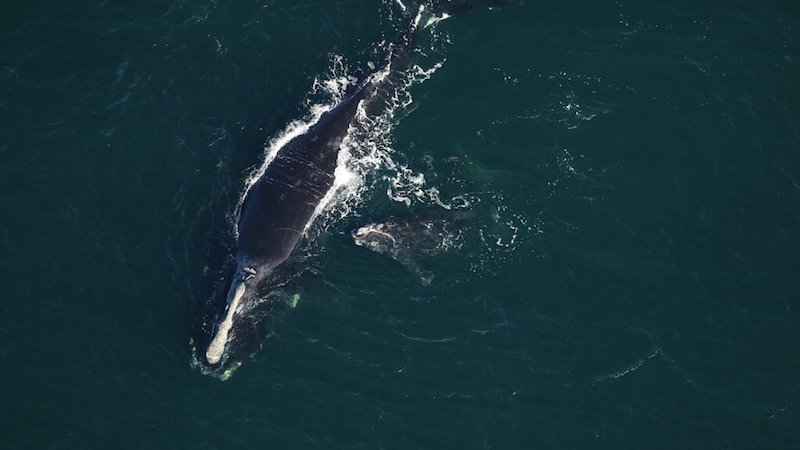Rules planned to save right whales loom over lobster fishers

This photo provided by the Florida Fish and Wildlife Conservation Commission shows a baby whale that is been injured near St. Augustine, Fla., Saturday, Feb. 13, 2021. The plight of endangered right whales took another sad turn Saturday, when a baby whale, possibly two months old, washed ashore on a Florida beach with telltale signs of being struck by a boat. [AP/ Florida Fish and Wildlife Conservation Commission]
America’s lobster fishery is getting close to the date when it will have to contend with new rules designed to try to save a species of whale from extinction.
The North Atlantic right whale numbers only about 360, and scientists have said the animal’s small population of breeding females could spell doom for the species. The National Marine Fisheries Service is developing new rules to reduce the possibility of entanglement in fishing gear, which can kill the whales.
A court decision required the fisheries service to finalize the rules by May 31. The agency is on track to produce the final rules on time, said Jennifer Goebel, a spokesperson.
The whale protection rules will focus on lobster and crab fisheries in the Northeast by reducing the number of vertical lines in the water, the federal government has said. It will also modify seasonal restricted areas and make other changes, the government has said.
The coming restrictions have sparked a rancorous debate between environmentalists and lobster fishermen over the proper way to save the whale. Lobster fishing groups have said overly restrictive rules could put them out of business.
The Maine Lobstermen’s Association said the industry has a “long history of conservation of lobster resource and large whale protections.”
Many environmentalists, meanwhile, have said the proposed rules don’t go far enough.
“Ultimately the top line is we don’t think it’s enough to save the species,” said Michaela Morris, oceans associate for Environment America. “They are not going to get us where we need to be if the rule is finalized as written right now.”
The fisheries service is accepting comments about the proposed rules until March 1. It’s holding public hearings about the proposed rules in New England, including one for southern Maine on Feb. 23 and one for northern Maine on Feb. 24.
The right whales were hunted to near extinction during the commercial whaling era. They’re also vulnerable to threats such as collisions with large ships and the warming of the ocean due to climate change.